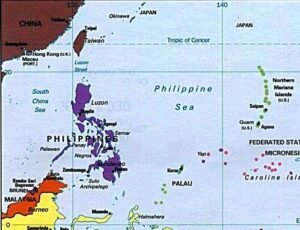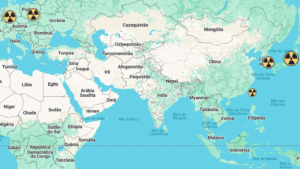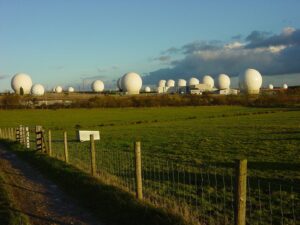- The new space race between the United States, China, Russia and India provoked a greater need for investment in space science;
- Europe, which still does not launch satellites from its own continent, found itself lagging behind its competitors;
- With the rotating Presidency of the European Council, Sweden announced the inauguration of its new space center for launching satellites.
After World War II and the beginning of the Cold War between the United States and the Soviet Union, both countries realized how important rocket research would be to the military.
With that in mind, the Space Race began in 1955, when rivals announced that they would soon launch satellites into orbit and then started a competition to measure who had the best space technology.
This competition focused on factors such as: who could put the first manned spacecraft into orbit and who would be the first to walk on the Moon. It was also important for showing the world science, technology and the economic system of the United States and the USSR.
In the same way, the recent insertion of Europe in the new space race and with launches departing from its own European territory – even if belatedly – is of great importance for space science, for the European military sector and also for regional pride.
The inauguration of the “Esrange Space Center” in Kiruna in northern Sweden, as a new space center, took place in January 2023 with the presence of Ursula von der Leyen, President of the European Commission, and the Swedish head of state, King Carl XVI Gustaf.

The New Space Center in Kiruna in Swedish Lapland
Esrange Space Center is a research and rocket launch center located in northern Scandinavia, about 40 kilometers east of the city of Kiruna, Sweden.
It is the basis for scientific research with high-altitude balloons, investigation of the Northern Lights, launch of sounding rockets, satellite tracking, among other types of research.
In early 2023, as Sweden assumed the Presidency of the Council of the European Union, in accordance with the envisaged rotation system, the country highlighted the plans of the Swedish Space Corporation (SCC) which states that an inaugural satellite launch from Kiruna it is “expected by the turn of the year 2023 to 2024”.
The Kiruna space center is seen as strategically important for the European Union, as the satellites that could be launched from the site could perform important functions, such as monitoring the oceans and providing broadband.
However, in addition to these functions, satellites are also extremely important for the national security of European countries, therefore, for regional security.
Therefore, according to Von der Leyen, this spaceport offers an independent European gateway to space and has enormous potential to improve the daily lives of Europeans, such as measuring the effects of climate change, monitoring road traffic in real time or even tracking natural disasters; in addition to the obvious launch of spy satellites to strengthen the bloc’s military capacity.
How the European Union is lagging behind in the World Space Race
In a watch-to-the-future report, the European Commission warned that control over technology is an increasingly crucial geopolitical battleground, and that the EU is losing the investment race in quantum computing, 5G, artificial intelligence and biotechnology.
In the space sector it is not much different. European governments are well aware that when it comes to the space race, they are falling behind.
As an example, one can note the greater space capacity of other countries such as:
- The United States:
- Cape Canaveral – this is a region located in Florida and is responsible for launching most ships into space. It is part of a region known as the Space Coast, as the Kennedy Space Center and an Air Force Base (Cape Canaveral Air Force Station) are located there.
- NASA – is perhaps one of the best known space agencies, part of the US federal government and responsible for the civil space program, aeronautical research and space research. The organization has an annual budget of $24 billion.
- Space X – the most advanced private space company, is an American manufacturer of spacecraft, launcher and satellite communications corporation headquartered in Hawthorne, California. It was founded in 2002 by Elon Musk with the stated aim of reducing space transportation costs to enable the colonization of Mars. The company’s revenue in 2022 was more than 2 billion USD.
- Blue Origin is a privately funded American aerospace manufacturer and suborbital spaceflight services company headquartered in Kent, Washington. Founded in 2000 by Jeff Bezos, founder and executive chairman of Amazon, the company is led by CEO Bob Smith and aims to make access to space cheaper and more reliable through reusable launch vehicles. The company’s annual revenue is approximately 42 billion dollars per year.
- Wenchang Space Launch Site – The Wenchang Space Launch Site, located in Wenchang, Hainan, China, is one of the most widely used rocket launch sites in China.
Program - Space Administration of the People’s Republic of China – is headed by the National Space Administration of China (CNSA). China’s space program has overseen the development and launch of ballistic missiles, thousands of artificial satellites, manned spaceflight, an indigenous space station and has declared plans to explore the Moon, Mars and the Solar System more widely.
- Russia:
- Baikonur Cosmodrome – is the world’s first spaceport for orbital and human launches and the largest operational space launch facility in the region. Baikonur is Kazakhstan territory, but all Russian manned space flights launch from there.
- State Space Corporation Roscosmos – Originating from the Soviet space program founded in the 1950s, Roscosmos is a state corporation of the Russian Federation responsible for spaceflight, cosmonautics programs and aerospace research. The program has an annual budget of nearly $2 billion.
- India:
- Indian Space Research Organization (ISRO) – is India’s lead agency to carry out tasks related to space applications, space exploration and development of related technologies. It is one of the few government space agencies in the world that have full launch capabilities, deploying cryogenic engines, launching extraterrestrial missions and operating large fleets of artificial satellites. The agency has an annual budget of nearly $2 billion.
- Europe:
- The European Space Agency (ESA) – Despite the delay, compared to the aforementioned competitors, Europe has a space organization, which has already carried out launches, but not from its own continent. Headquartered in Paris, ESA has a space center in Kourou, French Guiana. The French space agency CNES (Centro Nacional de Estudios Espacées) and the commercial companies Arianespace and Azercosmos carry out launches from Kourou.
It is also important to mention the first launch attempt by the United Kingdom, held in January 2023, which ends up demonstrating the European technological inferiority compared to other countries.
The UK is no longer part of the European Union, but it is still the tentative coming of a European project, which reflects the previous several years of low investment and technology in the region’s space sector.
Why Rocket and Satellite Launch Sovereignty Matters for Geopolitics
In addition to the benefits to Europeans’ daily lives related to weather and traffic monitoring, one of the most important reasons for launching satellites is geopolitical tensions with Russia.
In his speech, Von Der Leyen emphasized the importance of small satellites for European security and used Ukraine as an example of using the Starlink internet provider satellite network to track Russian troop movements.
In addition, the European Union also needs autonomy to maintain its satellite navigation system Galileo global navigation satellite system (GNSS) which competes with the US GPS, the Russian GLONASS and the Chinese BeiDou.
Leyen also stressed that his objective is to improve the resilience of European space infrastructure and strengthen its capabilities in a shared way, in addition to creating a new proposal for an EU cyber defense policy.
Another important benefit of Kiruna is its location. The proximity between the launch station and the European development centers facilitates the whole process, when compared with the station in use in French Guiana. With the geographic proximity of Kiruna, the displacement of scientists and equipment is smaller and easier, as well as the transport of satellites and rockets that will be done within the European continent itself.
The hope is that this breakthrough will put the EU in a new position when it comes to policy and space research. Finally, the benefits will be seen in the military, technology and space sectors.
























Be First to Comment